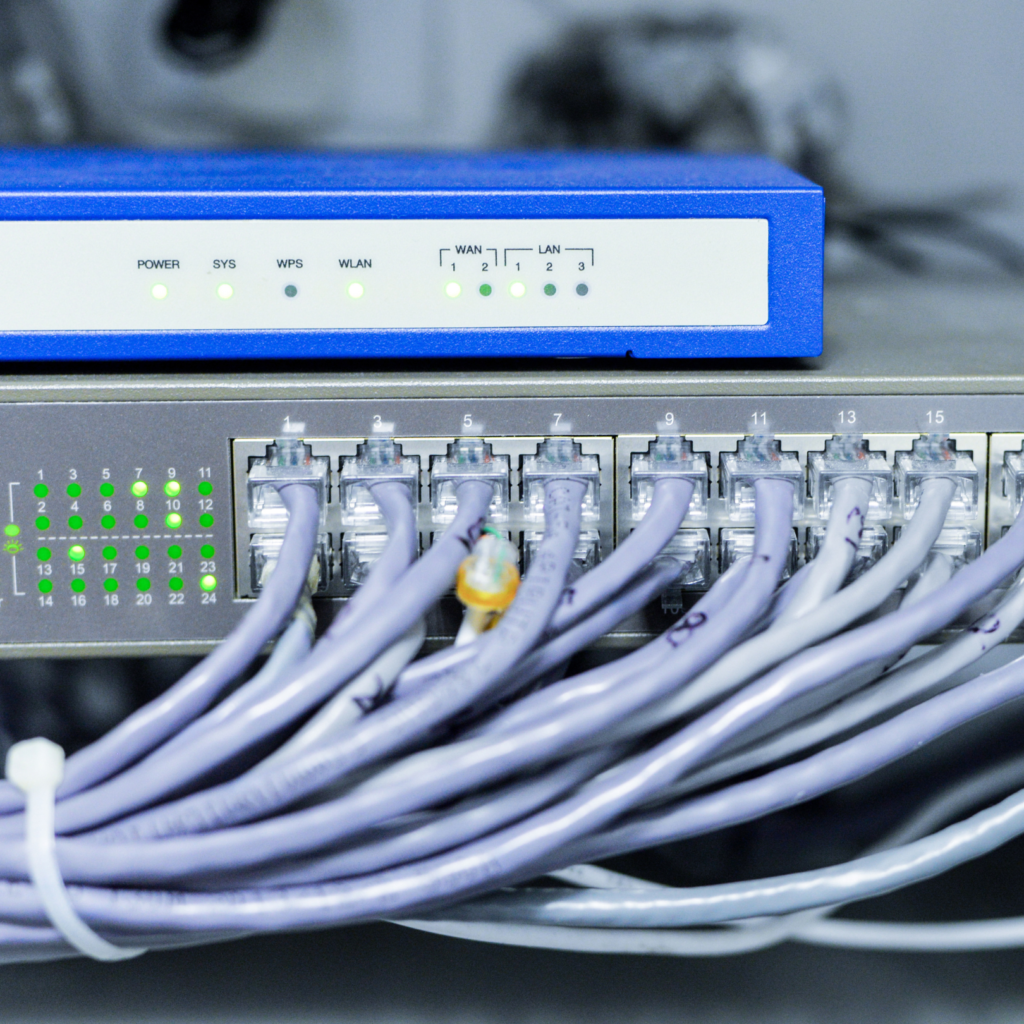Programmable switches are increasingly gaining ground in the network technology landscape thanks to their ability to make infrastructures more flexible, secure, and efficient.
With the advances of technologies and the growing demand for control and adaptability, traditional networks are being replaced by smarter solutions capable of keeping up with the speed of digital transformations.
These devices allow administrators to customize network operation through software, adjusting data traffic, optimizing performance, and responding quickly to configuration changes or operational needs.
Read on to find out what programmable switches are, what their main benefits are, and in which situations they should be considered to ensure more modern, scalable, and secure networks.
What are programmable switches?
They are advanced network devices that, unlike traditional switches (which operate with fixed functions defined by the manufacturer), offer greater autonomy, flexibility, and intelligence to the network infrastructure.
These switches work on the basis of programming languages and interfaces, such as P4 (Programming Protocol-independent Packet Processes), which allow you to define exactly how data packets should be handled.
Instead of following a rigid set of rules, the device can be dynamically reconfigured to perform different tasks, such as traffic filtering, load balancing, customized routing, collecting metrics, or even applying specific security policies.
The operation of a programmable switch involves two main layers:
Control plane: This is responsible for making decisions about how packets should be handled. In a programmable switch, this layer can be executed in a central controller (as is the case in SDN architectures), which sends instructions to the switch according to the needs of the network.
Data plane: This is where the packets travel. With programmable switches, this layer is flexible and can be customized with new rules, filters, and processing logic. This means that the administrator can program the switch to identify certain types of packets and carry out specific actions, such as redirecting, discarding, marking, or accounting for traffic.
A practical example: imagine a company that wants to apply different rules for different types of applications (such as video conferencing, email, and web browsing). With programmable switches, it is possible to create scripts that recognize the traffic of each application and treat it appropriately, prioritizing bandwidth for videoconferencing, for example, while limiting the speed of downloads at critical times.
In addition, these switches are highly integrable with Software Defined Networking (SDN) solutions. In this model, the behavior of the entire network can be centrally controlled via software, and the programmable switches act as the “executors” of the decisions made by this controller. This makes it easier to manage, automate, and respond to incidents in real time.
Benefits of programmable switches
The main advantage of programmable switches is their operational flexibility. They allow networks to adapt quickly to new demands, such as implementing services, reconfiguring security policies, or adapting to variations in traffic volume.
This adaptability is essential in IT environments that are constantly changing, such as those geared towards innovation, automation, and agile development.
Another significant benefit is centralized management, made possible by integration with software-based systems, such as SDN (Software-Defined Networking) architectures.
This feature simplifies network administration, allowing updates and changes to be made remotely, automatically, and standardized, which reduces response time and the risk of operational errors.
The possibility of customizing network behaviour also generates direct performance gains. By adjusting the way data packets are handled within the switch, it is possible to optimize traffic, reduce latency, and increase the speed of communication between devices.
This performance gain is especially relevant in critical applications such as data centers, mission-critical networks, high-performance computing (HPC) environments, and streaming platforms or real-time services.
Improved security is another important differentiator. By programming policies directly into the switches, it is possible to apply more granular controls, adapt defenses dynamically, and segment the network more precisely.
This strengthens the organization’s security posture, enabling a faster response to incidents and making it easier to meet compliance requirements, especially in regulated sectors such as finance, health, and government.
In addition, scalability is favored: as the network grows or new units are added, the programmable switches can be updated via software, avoiding the physical replacement of equipment and optimizing the total cost of ownership (TCO).
In short, programmable switches represent a strategic advance in the construction of modern networks. Their flexibility, automation capabilities, optimized performance, and adaptive security make them ideal for organizations looking for a resilient, efficient IT infrastructure that is prepared for future challenges.
When should I use programmable switches?
Programmable switches are especially recommended for constantly changing network environments.
If your infrastructure is frequently being adjusted, reconfigured, or expanded, these devices offer the flexibility needed to implement modifications quickly, securely, and efficiently.
This feature is particularly useful in agile development contexts, where new applications and services are implemented frequently, or in companies that are undergoing digital transformation processes and need a network that can keep up with this pace.
In addition, organizations that demand high performance and low latency, such as cloud service providers, technology companies, and financial institutions, also benefit significantly from programmable switches.
They make it possible to optimize data traffic, ensuring that critical services operate with maximum efficiency and stability, even under a high volume of simultaneous accesses.
Another ideal scenario for using these switches is in environments based on SDN (Software-Defined Networking). In this architecture, the network control plane is separated from the data plane, which makes it possible to centralize management and automate responses to traffic variations.
Programmable switches are key to this model, as they execute the rules defined by central controllers, ensuring agility and adaptability in network management.
Finally, companies operating in regulated sectors or dealing with sensitive data, such as healthcare institutions, banks, and public bodies, should also consider using programmable switches.
With them, it is possible to implement more granular, dynamic, and customized security policies, strengthening protection against cyber threats and facilitating compliance with sector-specific standards and regulations.
Contract your switch with Tracenet Solutions
We offer an approach that ranges from scalability analysis and network segmentation to the implementation of switching and routing protocols. To do this, we ensure that each project meets the specific needs of your company, even offering complementary services.
Some examples are network automation, WAN optimization, traffic balancing, and LAN and WAN service management through your NOC, guaranteeing a robust and adaptable infrastructure.
If your company is looking to modernize its network, increase operational efficiency, and be prepared for future challenges, count on Tracenet’s expertise in programmable switches!



